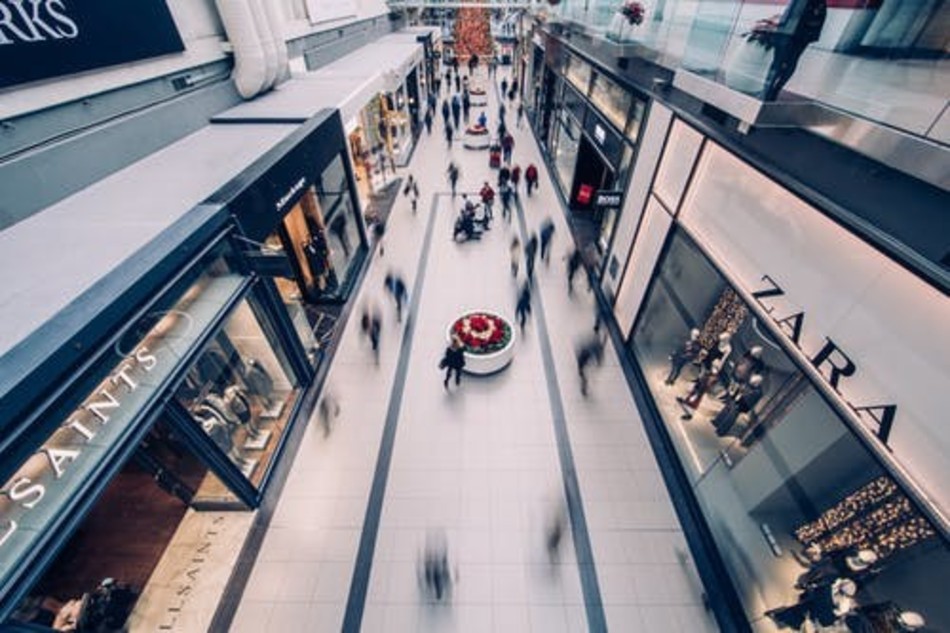
RIA BHANDARKAR – NOVEMBER 9TH, 2020
EDITOR: CHAZEL HAKIM
Since the emergence of Amazon, eBay, and other online alternatives to in-person shopping, traditional retail has experienced a slow decline. Shopping online is simply more convenient for consumers, especially those who are buying items in bulk more and more often. Nowadays, being able to compare the prices of different products, access virtually any good imaginable, and even avoid high shipping costs with programs such as Amazon Prime all incentivize the average customer to make their purchases digitally.
While online shopping has exploded, traditional shopping trips haven’t gone extinct. In 2018, 87% of consumers had begun their shopping trips on the Internet, but when asked whether they preferred online or physical shopping, 62% of consumers in 2018 said that they preferred to shop in-person in order to try out new products before buying them. The number of stores was even increasing pre-COVID-19, and investments in technology such as self-checkout areas and mobile-payment improved customers’ experiences.
But while malls and outlets may have stayed afloat in the 2010s, its future is bleak. The COVID-19 pandemic has prevented Americans from seeking out a shopping experience with any human interaction. Furthermore, the recent economic recession has decreased the amount of disposable income working class citizens could use for extraneous purchases. Meanwhile, higher-income earners have been shopping more than ever, turning to “retail therapy” to get through the monotony of quarantine from the safety of their own homes.
Will these recent trends end America’s fascination with malls and turn shopping from a day trip into a casual, spontaneous activity? While e-commerce may still dominate retail, there will always be a place for malls as commercial centers, even if they become a paler imitation of what they once were.
Shopping in the Pre-COVID Era
Prior to COVID-19, the general consensus on the retail industry was not that it was dying but simply adjusting. It is first important to understand how much of a phenomenon physical shopping is in the United States compared to the rest of the world. There is an average of 23.5 to 46.6 square feet of retail space per person in America, the most of any other country, ten times more than Germany or Mexico and 40% more than second place Canada.
American malls first emerged in the 1950s. Some have stuck to the traditional model, such as Macy’s and Lord & Taylor, some of the biggest outlets in America. Meanwhile, others diversified to offer customers more of a “lifestyle experience,” opening niche stores, movie theaters, and recreation centers as well.
Yet, most brick-and-mortar stores now rely on an online presence. Some studies found that stores with physical locations had better digital sales. The clothing outlet Forever 21 went bankrupt after losing $3.3 billion in 2017. It may not be a coincidence that only 16% of its sales at the time were from its online store.
While larger shopping malls may have thrived during the 2000s, smaller suburban ones closed. Dead malls have grown exponentially; in 2015, 20% of malls were classified as unhealthy. Meanwhile, the number of retail employees has decreased between 2018 and the start of the pandemic, despite representing nearly 6% of American workers.
The orientation away from shopping malls may be best represented by how Americans behave during high-traffic shopping seasons. In 2019, customers flocked to online stores for last-minute Christmas shopping. Online sales increased by 18.8% during this period, compared to 1.2% for stores. Meanwhile, 2019’s Cyber Monday topped online Black Friday and even Amazon’s Prime Day for total sales. In-store Black Friday experienced a slight increase in revenue that same year but still couldn’t recover from its dip in 2018.
How COVID Affects American Spending
Since the emergence of COVID-19, various factors have led to a new dependence on online retailers. 75% of Americans have tried a new shopping behavior during the pandemic. While some of these causes may be temporary, others could reshape the entire American shopping experience.
A lot of the reasons why Americans stocked their digital shopping carts at the beginning of the pandemic were specific to the moment they were in. When the lockdown began, Americans began panic-buying masks and other hygienic products in bulk. A lot of these items weren’t available in their areas, leading to the increase in online consumption. The CDC even had to assure Americans that there was a low risk of transmission via delivery.
Still, some of these behaviors may affect spending in the long-term. Younger generations (Millennials and Gen Z) were more likely to take advantage of online stores during 2020. If younger adults dramatically change their habits, this could indicate a permanent change. Furthermore, brand loyalty has decreased with the rise of online shopping. Over a third of consumers have tried new brands over the past year. The focus on availability over consistency could decrease the number of Americans who go to shopping centers, where options tend to stay the same. Individual stores may then suffer due to a loss of devoted patrons.
More and more Americans have changed their spending habits based on their increased time spent at home. As the entertainment and leisure industry transitions to a homebody economy, it’s unclear how malls, which have been increasing the number of interactive experiences, can adapt to the new economy.
Survival of the Fittest
A large number of malls across the country may not even get the chance to reopen and reorient. 15-17% of American malls will have to be repurposed once the pandemic is over. In fact, a record 15% of mall stores shut down this year. Within them, major clothing and jewelry chains are leaving most malls, relying more on online revenue or larger commercial centers.
Although the weakest malls have already been on their way out over this past decade, the pandemic has sped up the process. Malls already in debt can’t afford to pay rent relief as well as adjust to bring in more customers. The small populations served by regional malls also aren’t necessarily ready to return any time soon. Many people who frequent malls are older and more likely to be immuno-compromised.
Malls bring together many industries, and they may have to scrap stores with lower demand. For example, mall restaurants are still less likely to make money from food delivery compared to independent locations. Meanwhile, large electronics stores such as Apple, Best Buy, and GameStop are relying increasingly on online sales, especially since there seems to be no benefit to making purchases in-store.
Clothing stores are the biggest casualty of pandemic retail. Although trying on clothing may help shoppers, many are attracted to the lower prices and wider variety of options promised by online retailers. And even though malls rely on wedding and prom dress shopping for revenue, many customers are also more likely to purchase one-size-fits-all leggings than any professional or formal wear. On the other hand, it helps that major superstores such as Walmart and Target have a strong online presence, which allowed them to profit from the pandemic.
Looking to the Future
Even with the decreased traffic in in-person shopping, shopping malls are evolving and looking beyond the traditional model in order to get consumers more excited to get back out again. For some, that means doubling down on the changes they’ve already made to compete with online retail, while others will have to downsize and find alternate methods to generate revenue.
Some malls are completely re-envisioning their properties. Options include adding superstores, healthier supermarkets, and sporting goods outlets to encourage more people to patronize their local malls more often. Empty space can be filled by hotels, apartments and health care facilities to fill up vacant parking spaces. These malls will become multi-purpose centers and mainly serve the middle and working class.
Still, others are going in a completely different direction, catering more to the affluent. They’ll invest in luxury products and expensive fashion to entertain populations with more disposable income. It’ll also be possible for malls to continue as normal, with some safety measures such as curbside pickup and enforced social distancing.
Ironically, the rise of online shopping may benefit some mall owners. Amazon has already talked to mall operators about creating warehouses in sections once occupied by department stores. If malls begin operating as Amazon distribution centers, that may be the ultimate concession.
Conclusion
Malls were once the epicenter of American culture and the superlative symbol for American consumerism. Unfortunately for the mall industry, the decline of the allure of malls occurred at the same time as a new dependence on the Internet. Now, in an age of online shopping addictions and detailed online catalogs, there is less reason to venture outside.
There is no perfect solution for malls to adapt to consumers’ new interests. The mall of the future may be more of a recreation center than a space where visitors get a significant amount of shopping done. Small town malls may become non-existent, and many Americans may never understand the experience of malls as a social gathering place.
Even those that could’ve stuck it out for longer may face an early demise due to the lack of revenue during the COVID-19 crisis. The future of malls will have to take into consideration the fact that many of their former patrons may no longer be interested in long, unnecessary trips. Any mall that survives the 2020s would need to offer convenient alternatives to the in-person shopping experience. While the mall industry will change dramatically, that doesn’t mean it will have to die.
Featured Image Source: Newman Ferrara LLP
Disclaimer: The views published in this journal are those of the individual authors or speakers and do not necessarily reflect the position or policy of Berkeley Economic Review staff, the Undergraduate Economics Association, the UC Berkeley Economics Department and faculty, or the University of California, Berkeley in general.



